What I drank today is a tea that is given to me while I purchased some other samples from Hou De. He still has one unit on sale. I’ve been given this about three times already, but it’s hard refusing something free, no?
Since this is a maocha…. it’s loose and it’s whole, for the most part
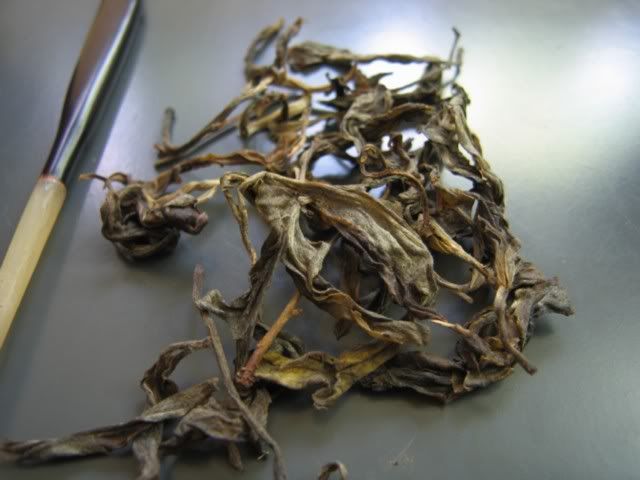
I also found a big yellow leaf in my bag
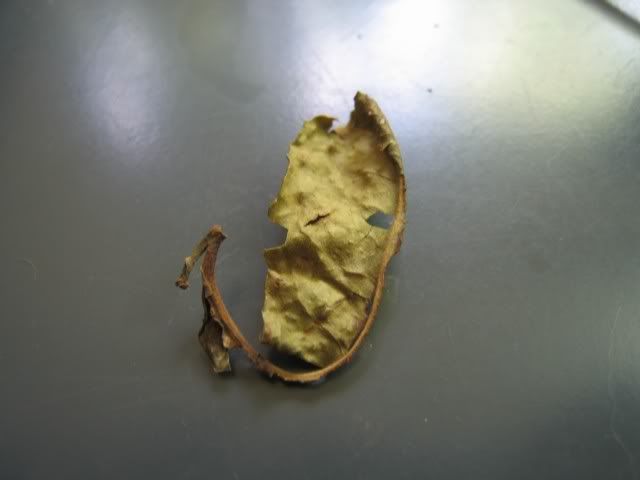
Which I dumped.
The tea, as I have noted previously, tastes… a little oolong ish. It’s got almost too much fragrance, but this time it’s not as obvious as when I used a gaiwan to brew. I also used relatively less leaves, which might also account for the slightly weaker aromas. It does taste like other Nannuos I’ve tried, but it’s …. a little weak. It’s got qi, but I don’t feel particularly happy drinking this tea, and I’m not sure why. It just doesn’t really do it for me.
It looks nice enough though, both the liquor
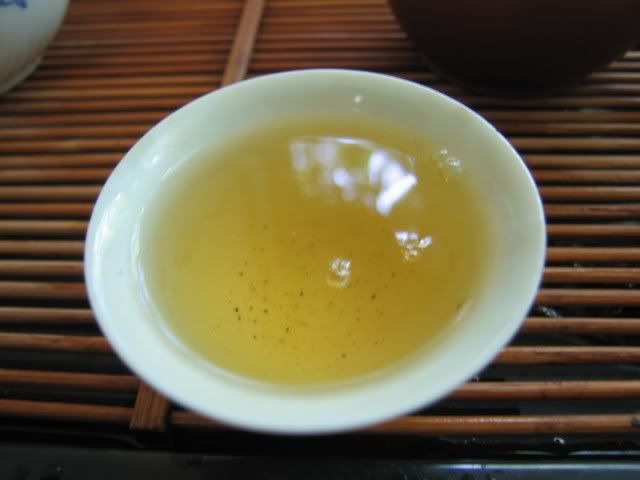
And the wet leaves
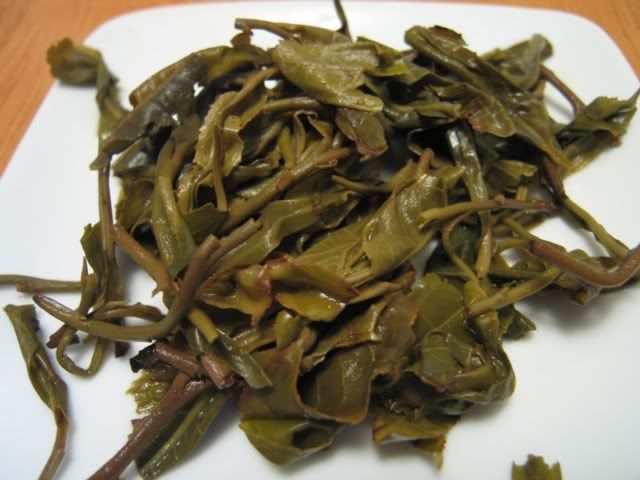
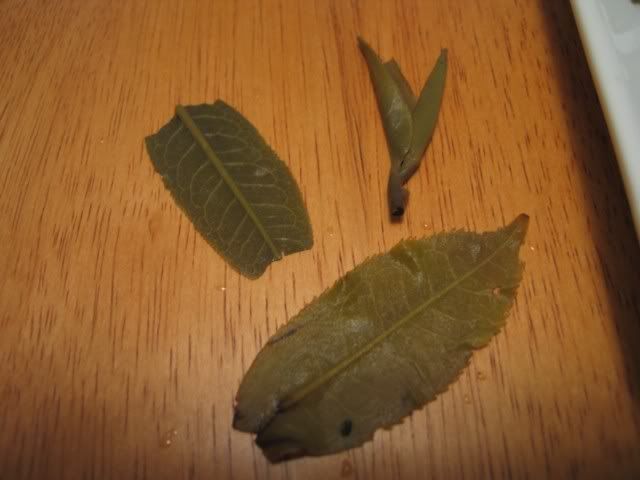
But I don’t know why… something about this tea just doesn’t really agree with me. It’s not that it’s bad… but I just don’t particularly find it interesting or anything. Hmmm. I wonder if I should try the other two

6 responses so far ↓
Anonymous // August 4, 2007 at 7:09 am |
Hey Marshall,
I have a question. Being you are knowledgable and very experienced with Pu-erh, have you ever done a post on how to select and buy pu-er safely without getting scammed or duped into thinking you are getting a better grade than you are. As you know, I reside in Oregon and we have more than a few tea houses that sell pu-erh (loose, toucha, bricks, cakes) but as a newbie to the whole thing, is there a way to tell if I am being scammed if the distributor says the pu-erh is from 1991 or earlier. What should I look for when selecting a pu-erh?
Also, by looking at a cake of pu-erh, how can I tell the grade? Often any writing on them is in Chinese–very few that I have come across have any english on them. I can read a bit of Chinese from my experience with TCM so I have been able to determine a little about what I am getting, but how does the person that doesn’t read any Chinese figure out what they are getting? What should I see when I am selecting a brick or cake? Are there any characteristics that are desirable? After all, this isn’t like buying an oz of green, white or oolong then chucking it if it is not that great. Seemingly, most of the pu-er comes in cake or brink form that can set one back $30 USD and more.
Of course, I am trying to lead you to be very explanitory as I think many others, including myself, could benefit from your experience. I myself have been hitting the pu-erh pretty hard, trying everything I can get my hands on and have had some really rough stuff that I wouldn’t give to my worse enemy. I have also been doing my best to make contact with sellers whom are honorable and knowledgable about what they are selling. I just find that there are a fair amount of tea dealers that hawk some stuff that is really not seemingly worth the money–even to my untrained pu-erh palate.
If you have neither the time nor the energy to do such a post, can you recommend a site that might have some good legit information for the beginner pu-erh buyer?
Thanks for any tips you can offer and best wishes to you.
~Amadeus
iwii // August 4, 2007 at 8:50 am |
Yeah, that sure is oolong-ish. But personally, I found it more on the Pu erh Side than the 2005 version. On the other hand, it lacks the grassy and vegetal fragrance that was so characteristic of the previous version. In fact, I found it hard to decide which is the most interesting. The 2005 one would at least have pleased a oolong drinker, but that one I don’t know. It is just an oddity. I am wondering whether that can age a bit… probably just a bit.
kibi_kibi // August 4, 2007 at 6:33 pm |
I don’t hate this tea, but I don’t love it either. Now and again I’ll enjoy it until the pack runs out, mostly for its relatively interesting yet simple taste; it’s a bit odd I agree, but more it is a little over-hyped for what it is. You may find it interesting that in the last few hours Guang has removed this product and the bulk buy versions, I wonder why? 🙂
-vl.
PS. The page is still in cache for those interested.
MarshalN // August 4, 2007 at 7:02 pm |
That’s odd, it was there when I checked.
Did somebody buy it?
MarshalN // August 4, 2007 at 10:02 pm |
Amadeus:
I haven’t done it mostly because I don’t want to mislead anybody. Writing down such thoughts in words is very dangerous because words don’t necessarily convey the senses that I might be trying to express, and buying tea relies on sensory perceptions, for the most part.
I also don’t feel I have enough experience to talk about such issues. Perhaps in ten years I’ll feel better, but right now… I’ll avoid treading the deep water of such issues.
If you wish you can email me at my user name followed by gmail.com. We can talk further about this, but as it is… I’ll avoid this subject for now 🙂
Anonymous // August 5, 2007 at 12:45 pm |
Marshall,
I thankyou for the response. I completely understand. When it comes to tea, Pu-er is just a little tough to pin down and reading your blog, you provide so much good insight on the subject. That said, I do understand you not wanting to tread into those waters. I will shoot you an email tomorrow on a couple specific questions that I have that you maybe could help me out on. Thanks
Peace and Joy to you!
~Amadeus